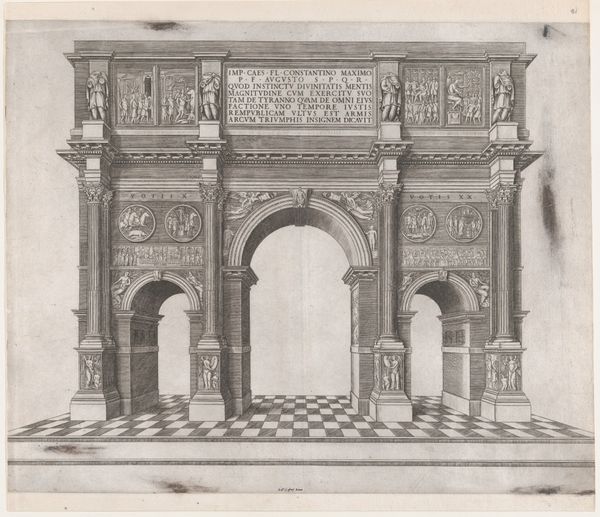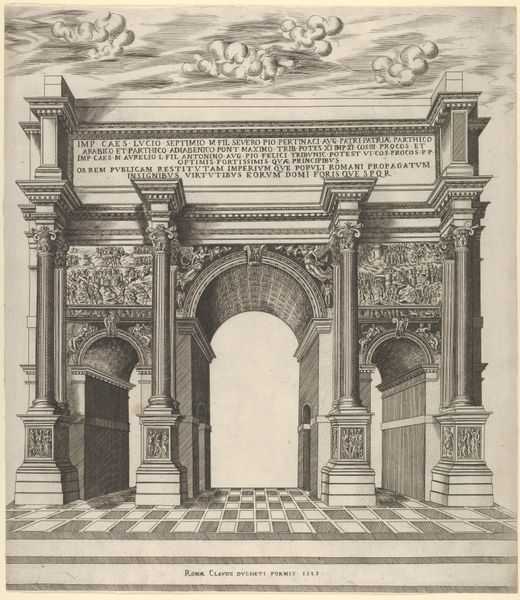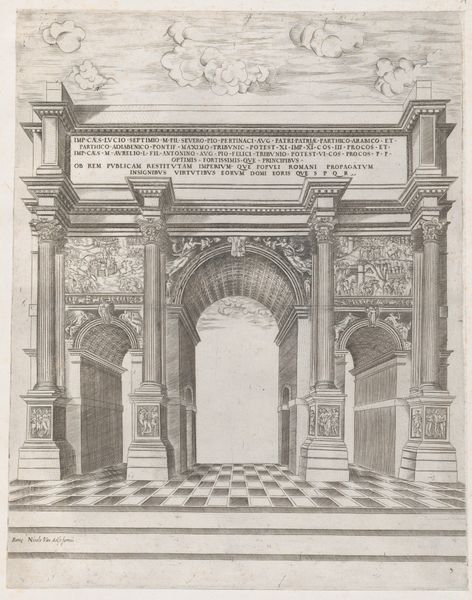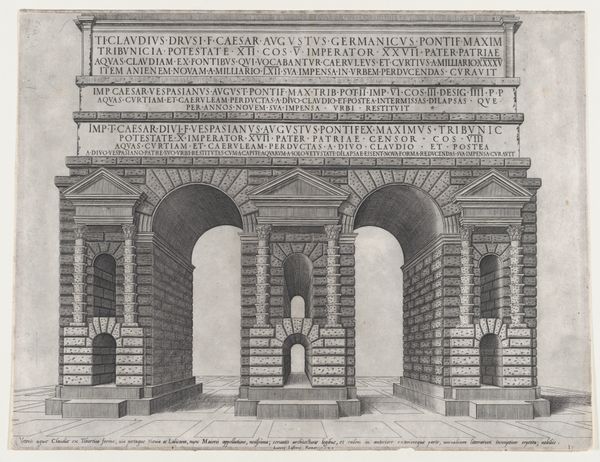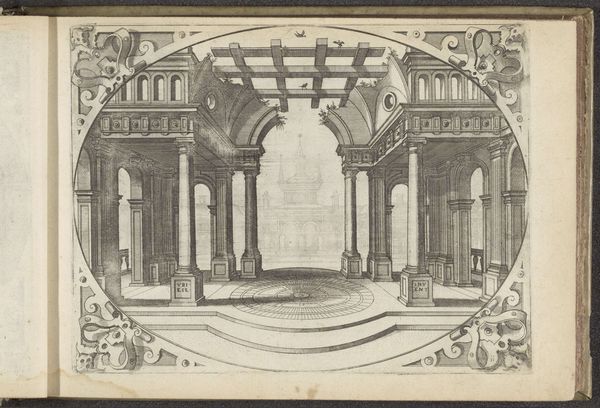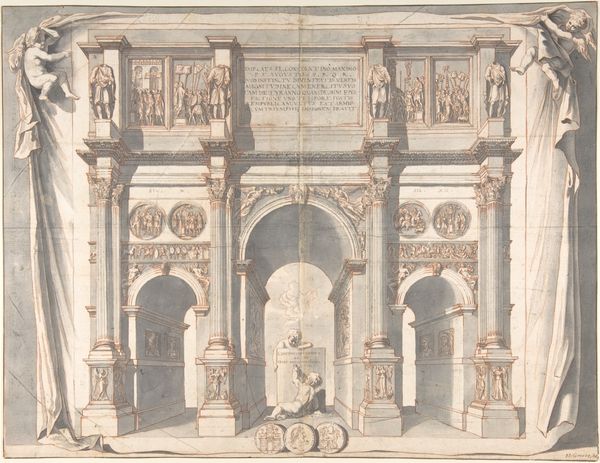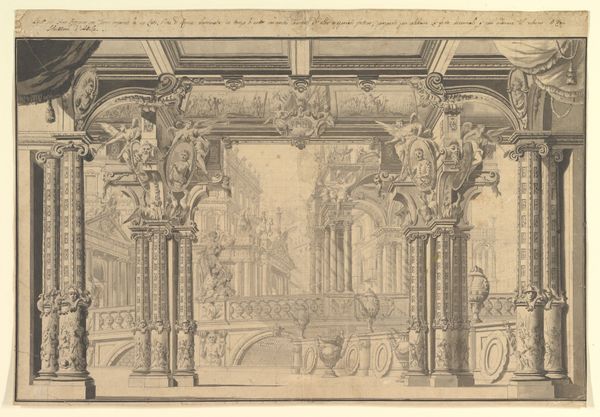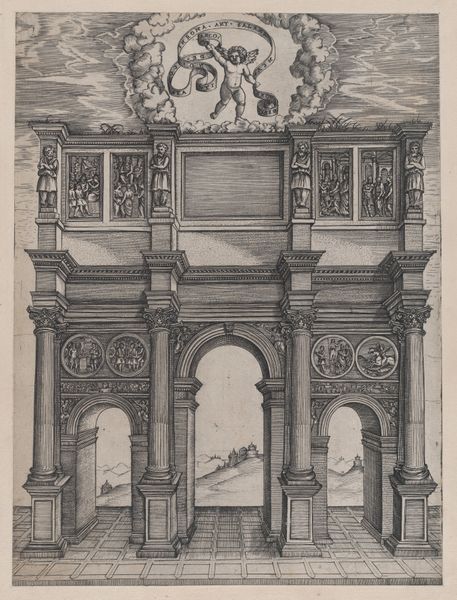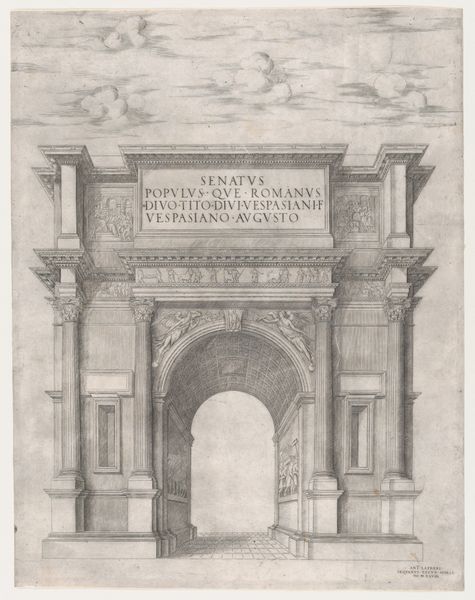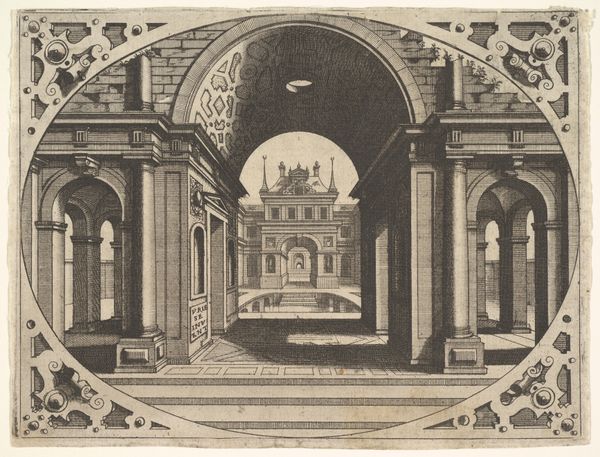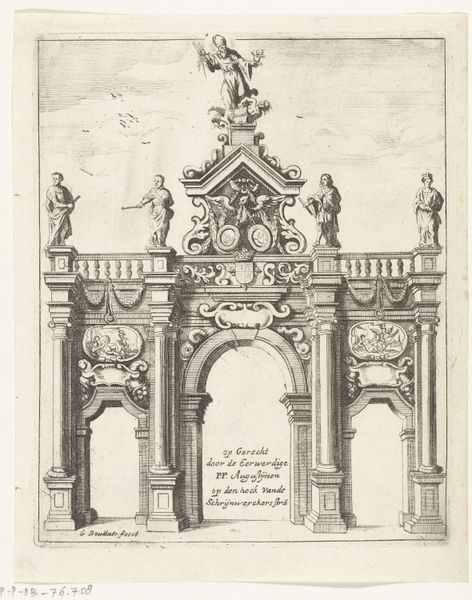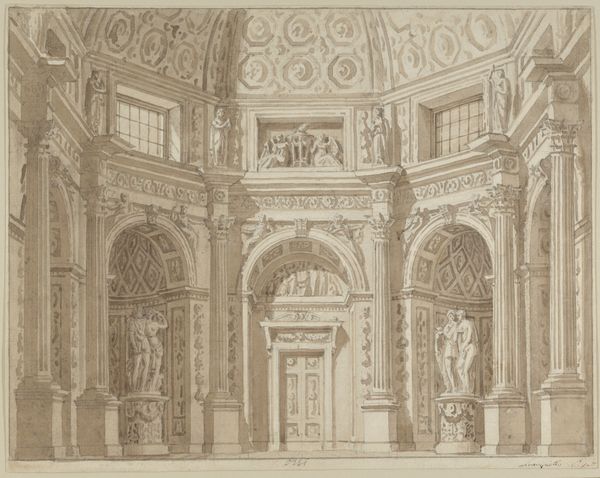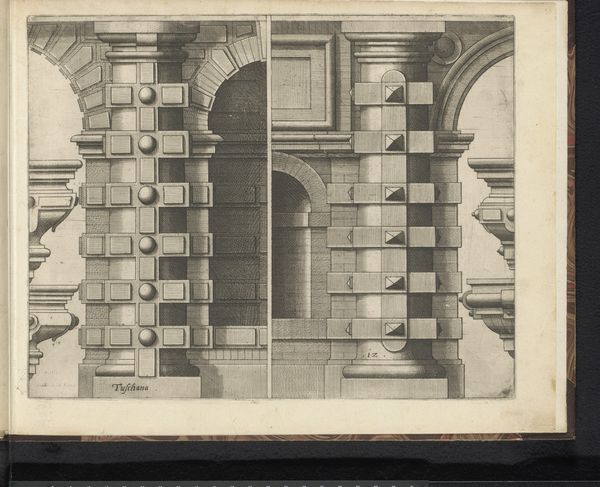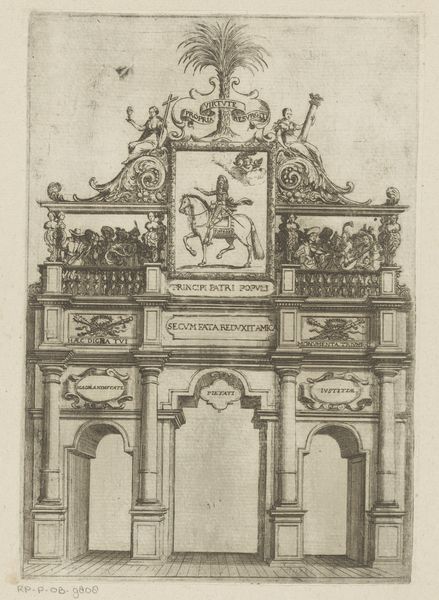
Speculum Romanae Magnificentiae: Arch of Constantine 1583
0:00
0:00
drawing, print, architecture
#
architectural sketch
#
drawing
#
toned paper
#
light pencil work
# print
#
pencil sketch
#
old engraving style
#
sketch book
#
incomplete sketchy
#
pen-ink sketch
#
arch
#
pencil work
#
pencil art
#
architecture
Dimensions: sheet: 11 5/8 x 16 5/16 in. (29.5 x 41.5 cm)
Copyright: Public Domain
This print, made in Rome in 1565 by an anonymous artist, depicts the Arch of Constantine. It's rendered in ink on paper using engraving, a printmaking technique that demands great patience and skill. Engraving involves using a tool called a burin to carve lines directly into a metal plate. Ink is then applied to the plate, filling these grooves. The surface is wiped clean, and paper is pressed against the plate to transfer the ink, creating a reversed image. Look closely and you can see the result of all that labor. The stark contrast between the ink and paper gives the image a graphic quality. The density of the engraved lines creates areas of shadow and volume. This technique allowed for the wide dissemination of architectural and artistic ideas during the Renaissance. The choice of engraving as a medium mirrors the arch itself, which was built to communicate a political message. Both were essentially technologies of power. By appreciating the material qualities of this print, we can better understand its historical and cultural importance.
Comments
No comments
Be the first to comment and join the conversation on the ultimate creative platform.
